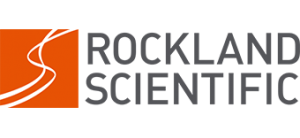Setup.cfg: Managing Instrument Configuration Files
The instrument configuration file (setup.cfg) is a critical part of your Rockland instrumentation. Proper management of the configuration file will ensure successful data acquisition. Here are a few tips and tricks for managing configuration files to make your life easier and help ensure successful data collection.
Anatomy of a configuration file:
The first section of a configuration file is known as the root section. The root section determines data acquisition; any changes to this section could create problems with future data collection. We do not advise making changes to the root section, but if you do, please ensure that you test data acquisition on you instrument before deployment. Once you collect data, review it with the ODAS MATLAB Library to confirm successful data acquisition of all channels. Confirming data acquisition is especially important before a glider mission as it may not be possible to modify the setup.cfg file once the glider is at sea. Whenever possible, conduct a short test mission or simulated mission with a modified setup.cfg file before deploying a glider. We also encourage you to send modified setup.cfg files to the Rockland Support Team for review.
The second section of the configuration file is known as the channel section. It is not critical to have the correct information in this section during data acquisition. The channel section contains all of the coefficients and details required to convert the raw data to physical units during data processing. The contents of this section can be changed after the data has been collected. For example, if you return your shear probes for re-calibration after a deployment, you can insert the new shear probe sensitivity values and re-process the data.
Modifying Configuration Files:
If you need to modify the configuration file in an existing data file (.p files) you can use the extract_setupstr.m function in the ODAS MATLAB Library to extract the configuration file (setup.cfg). The configuration file can then be edited in an a text editor. Notepad++ is a recommended text editor for Windows operating system. Patch the edited configuration file back in to the .p data file using the patch_setupstr.m function.
Whenever modifying the setup.cfg file it is important to record the change as a comment in the header. Comments can also be made anywhere in the configuration file using the semicolon. For Example:
;2019-09-06 Changed S1 sens value, Rockland Support Team
or
; ----------------- ; The shear probe channels [channel] ; instrument dependent parameters id = 8 name = sh1 type = shear adc_fs = 4.096 adc_bits = 16 diff_gain = 0.962 ; sensor dependent parameters sens = 0.0700 ;Comments like this can also be added as needed SN = M2000 cal_date =2010-01-01
Naming setup.cfg Files and Loading onto the Instrument:



